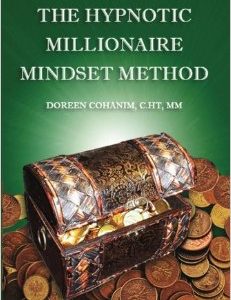Particularly when you’re older, you’re 14 percent more likely to die on your birthday than on any other day of the year. Particularly when you live in certain geographical areas, you’re 13 percent more likely to die after getting paid. And particularly when you’re human, you’re more likely to die in the late morning – around 11 a.m., specifically – than at any other time during the day.
Yes. That last one comes from a new study, published in the Annals of Neurology, that identifies a common gene variant affecting circadian rhythms. And that variant, per study co-authors Andrew Lim and Clifford Saper, could also predict the time of day you will die.
Even death, apparently, has a circadian rhythm.
For more on this, read Lindsay Abrams’ great overview of the study and its findings. What’s fascinating about it from a tech perspective, though, is the role that technology – or, more specifically, the absence of it – plays in making the biggest biological determination there is: the time of our deaths. Circadian rhythms are physiological in origin, but they have structural analogs – analogs that have to do with the highly mediated way we human animals live our lives. When we’re younger, we impose schedules on ourselves. We use machines to wake us from sleep. We use artificial illumination to escape a mandatory night.
But the circumstantial realities of old age change that, to a significant extent. “Social jet lag” – the phenomenon through which our natural circadian rhythms are undermined by rigidly collective social schedules – is less of a factor for people who aren’t (generally) working and whose daily routines aren’t (generally) governed by strict itineraries. It is less of a factor, in other words, for people who are relatively unreliant on technology. Retirees can sleep when they need to, wake when they want to, and generally obey the whims of their bodies much more readily than can younger people.
And that change in the way older people live also affects – potentially, probabilistically – the way they die. Because, just as circadian rhythms regulate things like preferred sleep periods and the time of peak cognitive performance, they also regulate the times during which we’re most likely to experience an acute medical event like a stroke or heart attack. As Saper – who is also the James Jackson Putnam Professor of Neurology and Neuroscience at Harvard Medical School, and the chairman of the Beth Israel Deaconess Medical Center Department of Neurology – explained to me in an email, there is a “biological clock ticking in each of us.”
So the technological freedom that comes with people’s retirement can actually end up bringing a kind of cruel regularity to our deaths. What Saper and Lim realized through their research is that there seems to be one DNA sequence that determines, essentially, how each of us relates to time itself. And data analysis – poring through 15 years’ worth of sleep and death patterns collected from subjects in an unrelated sleep study – helped them to make the realization.
Saper, via email, elaborates:
What we found was a “single nucleotide polymorphism” or SNP where about 60% of chromosomes have an adenosine (A) and 40% have a guanine (G) in the DNA code. Because you have two copies of each chromosome (one from each parent), 36% of people have two A’s (AA), 16% have two G’s (GG), and 48% have one of each (AG). When we looked at a group of older but healthy people (all over 65, so mostly retired) we found that the AA’s tend to wake up about 1 hr before the GG’s, with the AG’s in the middle.
What we think this means is that the AAs have somewhat higher amounts of a protein called Period1 in their cells, which we think causes their biological clock to run a bit faster. On a daily basis, what this means is that they would tend to get up a bit earlier each day. If this persisted (getting up earlier and earlier each day) they would soon be getting up in the middle of the night, and going to bed before dinnertime. This obviously would cut down on their ability to socialize with other people. So, we think that the AAs adjust their timing a bit each day, to stay at a “socially acceptably early” schedule, which is on average about an hour earlier than GGs.
That makes sense. And then, since circadian rhythms control wakefulness – alertness, blood pressure, heart efficiency – it stands to reason that the flip side could be true, as well: that the rhythms that stimulate human activity could also stimulate its end.
But, then … where does the 11 a.m. frequency – and, for the GG group, a less-common 6 p.m. frequency – fit into that framework? Why would we be more likely to die during those hours than at other times of the day?
Genetics. Well, genetics and statistics. Again, Saper:
During the time when a person is dying, social calendars are much less important. So, we think that in that period, the individuals let their own biological clocks shift further from the external world, and the GGs drift further apart from the AAs. Interestingly, the AGs stay closer to the AAs, so perhaps just one A is enough to give a fairly early phenotype.
The result is that the different biological processes that lead to death occur earlier in the day in the AAs than in the GGs. For example, there is an increase in cardiac death from about 3 or 4 a.m. to about noon. This is thought to coinicide with the increase in hormones, like cortisol and adrenaline, that increase heart rate and blood pressure, and may push someone with cardiac problems over the edge, causing cardiac death. Each type of death has a “circadian rhythm,” tending to occur most commonly at a particular time of day, depending upon what types of physiological events tend to trigger it, and when they occur in the individual. Even these events must obey the biological clock ticking in each of us.
So you have a higher percentage of the population who carry the AA gene variant – and, phenotypically, they’re resembling the group with the AG variant. And that group is, due to all the factors Saper listed, more likely to die earlier in the day than other groups. Around, on average, 11 a.m.
That’s not to say, of course, that 11 a.m. is also the most common time for getting hit by a bus, or bitten by a snake, or consumed by a ball of Mayan prophecy-fire. But for the population of people who have made it to old age – the people who will die of natural causes rather than circumstantial ones – there’s a probabilistic element to the time that they will die. And that’s because death by “natural” causes is natural in the fullest sense. Once we transcend our technologies, our biologies take over. The genetic messages that empower our lives will also, eventually, orchestrate our deaths.
Source: Megan Garber, The Atlantic, November 21, 2012.




 November 22nd, 2012
November 22nd, 2012  doreen.co
doreen.co 
 Posted in
Posted in 










 HMI Private Practice of Hypnotherapy Provider
Primary specialty: Alternative Medicine
Secondary speciality: Behavior Therapy
Doreen is an
Honors Graduate of HMI and also a Certified Practitioner /Facilitator of The Melchizedek MethodT (incorporating the Hologramof Love Merkaba). Energy Healer since August 1999, she was healedfrom a car accident preventing back surgery and being able toeliminate her back pain with hypnotherapy and energyhealing
Doreen is an Honors Graduate of HMI and also a Certified Practitioner / Facilitator of The Melchizedek MethodT (incorporating the Hologram of Love Merkaba). Energy Healer since August 1999,...
HMI Private Practice of Hypnotherapy Provider
Primary specialty: Alternative Medicine
Secondary speciality: Behavior Therapy
Doreen is an
Honors Graduate of HMI and also a Certified Practitioner /Facilitator of The Melchizedek MethodT (incorporating the Hologramof Love Merkaba). Energy Healer since August 1999, she was healedfrom a car accident preventing back surgery and being able toeliminate her back pain with hypnotherapy and energyhealing
Doreen is an Honors Graduate of HMI and also a Certified Practitioner / Facilitator of The Melchizedek MethodT (incorporating the Hologram of Love Merkaba). Energy Healer since August 1999,...